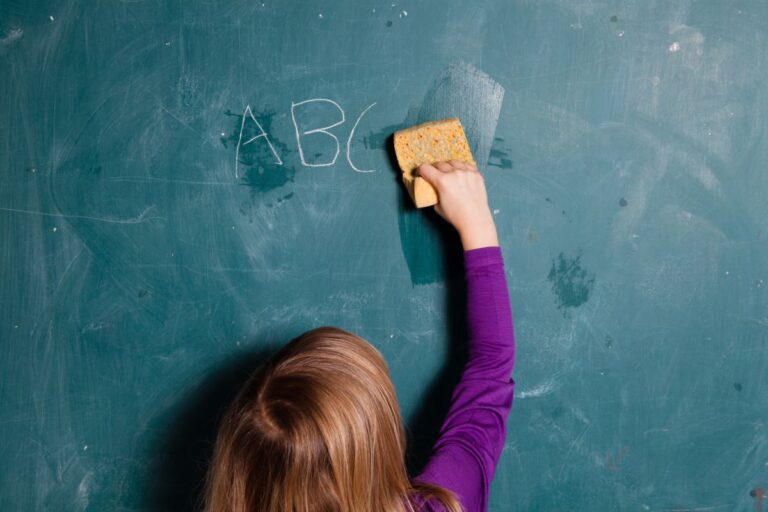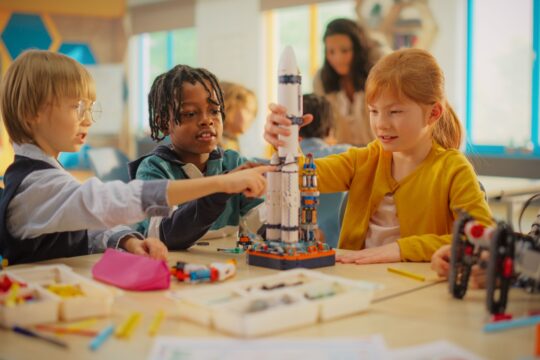Responsibility is one of those essential life skills that every child needs to learn. But let’s be real—many kids today struggle with it because it’s just easier for parents and teachers to do things for them.
Teaching responsibility involves more than just having children finish a task. It is about encouraging them to make thoughtful decisions and take pride in achieving things by themselves.
Here are some simple but effective ways to help your students develop this critical skill.
Model Responsibility
If you want your students to be responsible, you have to show them what it looks like. Kids are always watching—even when you think they aren’t. If you want them to clean up after themselves, they need to see you doing it too.
Keep your classroom neat and organized, be punctual, and follow through on your promises. The more responsibility you model, the more your students will pick up on it.
Set Clear Expectations
Ever notice that when students don’t meet your expectations, it’s often because they didn’t fully understand them in the first place? Avoid confusion by clearly defining what responsibility looks like in your classroom.
Students need structure, and that starts with setting clear expectations. If you want desks to be clutter-free, show them what a clean desk looks like. If you want materials returned to their proper places, demonstrate exactly where they go.
Without clear expectations, kids are left guessing—and that leads to frustration for both you and them. But when students know exactly what’s expected, your classroom will run much more smoothly.
Follow Through with Logical Consequences
Helping students learn responsibility means making sure they understand that their actions have consequences. Instead of using punishment when they forget to do something, allow them to experience natural consequences that directly relate to their actions.
Even with clear expectations, some students will still struggle with responsibility. That’s why accountability is key, but the consequences should always connect to the responsibility that was neglected. If a student leaves their desk messy, they need to clean it up.
If they leave books on the floor instead of putting them away, they should take the time to put them back in their proper place. When students see that their choices have direct outcomes, they begin to understand the importance of following through.
Assign Classroom Jobs
Students thrive when they feel like valued members of their community, and classroom jobs are a perfect way to build responsibility.
Whether it’s pencil sharpening, organizing supplies, collecting papers, or managing the classroom library, there’s always an opportunity for students to take responsibility.
Not only does this lighten your workload, but it also teaches students the value of contributing to a community. Remember, you don’t have to do everything yourself!
Praise Responsible Behavior
Want to see more responsible behavior? Call it out when you see it! Instead of focusing on what students are doing wrong, highlight what they’re doing right. A simple “I love how you took the initiative to clean up your space” can go a long way.
Public praise encourages students to continue responsible behavior and motivates others to do the same. The more you highlight responsible actions, the more students will rise to the occasion.
Try the Jigsaw Method
The Jigsaw cooperative learning strategy is a great way to reinforce responsibility. In this method, each student in a group is responsible for learning and teaching a specific part of a lesson.
If one student doesn’t do their part, the whole group struggles. This structure naturally teaches accountability, and students quickly realize that being responsible impacts others, not just themselves.
Make Responsibility a Challenge
Want to boost engagement? Turn responsibility into a friendly competition. If students struggle with messy desks, challenge them to see who can keep the cleanest desk for a week.
If they forget to turn in homework, create a class-wide challenge for on-time submissions. Kids love a little competition, and framing responsibility as a challenge makes it more fun.
Keep the Conversation Going
Teaching responsibility isn’t a one-and-done lesson, it’s something you need to revisit often. Post reminders around your classroom, discuss it regularly, and integrate it into your daily routines. The more students hear about and see responsibility in action, the more it becomes second nature to them.
Assign Daily Responsibilities
Give students a chance to practice responsibility every day. Group them into small teams and assign each team a task, like organizing the classroom library, tidying up materials, or preparing supplies for the next activity. At the end of the week, students reflect on their progress and set goals for improvement.
Avoid Overusing Rewards
Here’s the thing, students shouldn’t need a reward to be responsible. While occasional treats for exceptional effort are fine, responsibility should be an expectation, not something they’re bribed into doing.
Praise and acknowledgment go much further in reinforcing long-term habits than stickers or prize boxes. While rewards can be motivating, responsibility is something students should learn to do without expecting a prize.
Instead of using reward charts or tangible incentives, focus on intrinsic motivation by helping students see the personal benefits of being responsible, such as how it will make their lives easier, and how it feels good to contribute to the community.
Responsibility is a lifelong skill that benefits students far beyond the classroom. By modeling it, setting clear expectations, and giving students ownership of tasks, you’re helping them build habits that will serve them well in school and life. Keep reinforcing it, and over time, you’ll see your students grow into more accountable and independent learners.
Educators never stop learning; check out our available graduate degree programs to hone your skills and promote lifelong learning and academic excellence.




